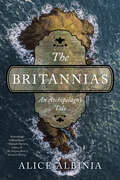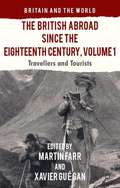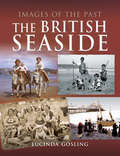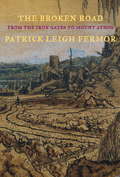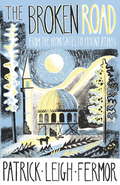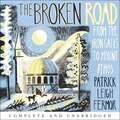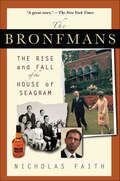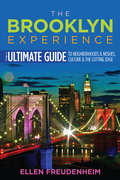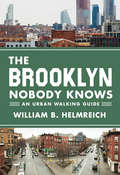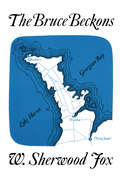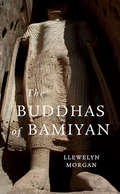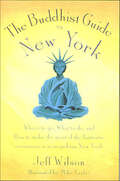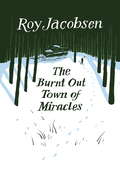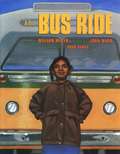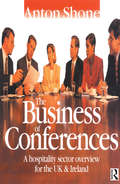- Table View
- List View
The Britannias: An Archipelago's Tale
by Alice AlbiniaLonglisted for the Ondaatje Prize and the Women’s Prize for Non-Fiction Shortlisted for the Stanford Travel Writing Award “A dazzlingly brilliant book.” —Hannah Dawson, editor of The Penguin Book of Feminist Writing A revelatory portrait of Britain through its islands, The Britannias weaves history, myth, and travelogue to rewrite the story of this “island nation.” From Neolithic Orkney, Viking Shetland, and Druidical Anglesey to the joys and strangeness of modern Thanet, The Britannias explores the farthest reaches of Britain’s island topography, once known by the collective term “Britanniae” (the Britains). This expansive journey demonstrates how the smaller islands have wielded disproportionate influence on the mainland, becoming the fertile ground of political, cultural, and technological innovations that shaped history throughout the archipelago. In an act of feminist inquiry, personal adventure, and literary quest, Alice Albinia embarks on a series of journeys that traverse Britain and reach beyond its contemporary borders—from Europe to the Caribbean, Ireland to Scandinavia. She walks the coastlines of Lindisfarne, sails through the Hebrides archipelago, and bikes into Westminster at dawn. As she takes us across extravagantly varied island topographies and surveys centuries of history, Albinia ranges between languages and genres, and through disparate island cultures. She talks to stubbornly independent islanders and searches for archaeological and linguistic traces of island identities, discovering distinct traditions and resistance to mainland control. Trespassing into the past to understand the present, The Britannias uncovers an enduring and subversive mythology of islands ruled by women. Albinia finds female independence woven through Roman colonial reports and Welsh medieval poetry, Restoration utopias and island folk songs. These neglected epics offer fierce feminist countercurrents to mainstream narratives of British identity and shed new light on women’s status in the body politic today. Vivid, perceptive, and disruptive, The Britannias boldly upturns established truths about Britain while revealing its suppressed and forgotten beauty.
The British Abroad Since the Eighteenth Century, Volume 1
by Martin Farr Xavier Gu�ganThis book considers the British travelling beyond their isles over the last three hundred years, and through a range of interdisciplinary perspectives reflects on their taste for discovery and self-discovery both through the exploration - and exploitation - of other lands and peoples.
The British Seaside: The British Seaside (Images of the Past)
by Lucinda GoslingDrawing on the archives of Mary Evans Picture Library, Images of the Past The British Seaside is a nostalgic promenade through the history of Britains seaside resorts from their early genesis as health destinations to their glorious, mid-20th century heyday, subsequent decline and recent regeneration.British coastal resorts developed during a period of vast expansion and social change. Within a century, the bathing phenomenon changed from a cautiously modest immersion in the sea to a pastime that prompted the building of vast art deco temples dedicated to the cult of swimming. Once quiet fishing villages mushroomed into bustling seafronts with every conceivable amusement and facility to entice visitors and secure their loyalty for future visits. Where transport to the coast may have once been via coach and horses or boat, soon thousands of working class day-trippers flooded seaside towns, arriving by the rail network that had so quickly transformed the British landscape. This fascinating book follows these shifts and changes from bathing machines to Butlins holiday camps, told through a compelling mix of photographs, cartoons, illustrations and ephemera with many images previously unpublished.Covering every aspect of the seaside experience whether swimming and sunbathing or sand castles and slot machines The British Seaside reveals the seasides traditions, rich heritage and unique character in all its sandy, sunny, fun-packed glory.
The British on Holiday
by Hazel AndrewsThis book is the only in-depth ethnographic study of British charter tourists. It is based on several months of participant observation of British charter tourists on holiday in Palmanova and Magaluf on the Mediterranean Island of Mallorca. With a focus on space, the body, and food and drink practices, the book explores the experiential nature of touristic practice which provides insight into constructions, understandings and knowledge of the self in relation to national, regional, class, and gender identities. These issues in turn highlight elements of power and control which are mainly articulated through the attempts to manipulate tourists' consumption practices by the mediators of tourists' experiences.
The Broken Mirrors: Sinalcol
by Elias KhouryWhy did he return to Beirut? Why did Karim leave his wife and children and the life he had built in France to return to a homeland still reeling from civil war? Was it to answer his brother Nasim's call to raise a hospital out of the ashes? Was it to kick over the traces of past love affairs? Or to establish the truth behind his father's death? Or was it to confront at last the ghost of the man known only as "Sinalcol", a legendary phantom of the civil war, and a broken mirror of himself? In Beirut, Karim will learn the fate of old comrades, and face a brother who shares a past as divided as the city itself. And he will find that peace is only ever fleeting in a war without end.
The Broken Road
by Patrick Leigh FermorIn the winter of 1933, eighteen-year-old Patrick ("Paddy") Leigh Fermor set out on a walk across Europe, starting in Holland and ending in Constantinople, a trip that took him almost a year. Decades later, Leigh Fermor told the story of that life-changing journey in A Time of Gifts and Between the Woods and the Water, two books now celebrated as among the most vivid, absorbing, and beautifully written travel books of all time.The Broken Road is the long-awaited account of the final leg of his youthful adventure that Leigh Fermor promised but was unable to finish before his death in 2011. Assembled from Leigh Fermor's manuscripts by his prizewinning biographer Artemis Cooper and the travel writer Colin Thubron, this is perhaps the most personal of all Leigh Fermor's books, catching up with young Paddy in the fall of 1934 and following him through Bulgaria and Romania to the coast of the Black Sea. Days and nights on the road, spectacular landscapes and uncanny cities, friendships lost and found, leading the high life in Bucharest or camping out with fishermen and shepherds-in the The Broken Road such incidents and escapades are described with all the linguistic bravura, odd and astonishing learning, and overflowing exuberance that Leigh Fermor is famous for, but also with a melancholy awareness of the passage of time, especially when he meditates on the scarred history of the Balkans or on his troubled relations with his father. The book ends, perfectly, with Paddy's arrival in Greece, the country he would fall in love with and fight for. Throughout it we can still hear the ringing voice of an irrepressible young man embarking on a life of adventure.
The Broken Road: From the Iron Gates to Mount Athos
by Patrick Leigh FermorThe long-awaited final volume of the trilogy by Patrick Leigh Fermor. A Time of Gifts and Between the Woods and the Water were the first two volumes in a projected trilogy that would describe the walk that Patrick Leigh Fermor undertook at the age of eighteen from the Hook of Holland to Constantinople. 'When are you going to finish Vol. III?' was the cry from his fans; but although he wished he could, the words refused to come. The curious thing was that he had not only written an early draft of the last part of the walk, but that it predated the other two. It remains unfinished but The Broken Road - edited and introduced by Colin Thubron and Artemis Cooper - completes an extraordinary journey.
The Broken Road: From the Iron Gates to Mount Athos
by Patrick Leigh FermorThe long-awaited final volume of the trilogy by Patrick Leigh Fermor.A Time of Gifts and Between the Woods and the Water were the first two volumes in a projected trilogy that would describe the walk that Patrick Leigh Fermor undertook at the age of eighteen from the Hook of Holland to Constantinople. 'When are you going to finish Vol. III?' was the cry from his fans; but although he wished he could, the words refused to come. The curious thing was that he had not only written an early draft of the last part of the walk, but that it predated the other two. It remains unfinished but The Broken Road - edited and introduced by Colin Thubron and Artemis Cooper - completes an extraordinary journey.(P)2014 John Murray Press
The Broken Road: From the Iron Gates to Mount Athos (Nyrb Classics Ser.)
by Patrick Leigh FermorThe long-awaited final volume of the trilogy by Patrick Leigh Fermor. A Time of Gifts and Between the Woods and the Water were the first two volumes in a projected trilogy that would describe the walk that Patrick Leigh Fermor undertook at the age of eighteen from the Hook of Holland to Constantinople. 'When are you going to finish Vol. III?' was the cry from his fans; but although he wished he could, the words refused to come. The curious thing was that he had not only written an early draft of the last part of the walk, but that it predated the other two. It remains unfinished but The Broken Road - edited and introduced by Colin Thubron and Artemis Cooper - completes an extraordinary journey.
The Bronfmans: The Rise and Fall of the House of Seagram
by Nicholas FaithFor decades, the Bronfman family ruled Seagram's and the liquor industry. This is the story of their meteoric rise and spectacular fall.The story of the Bronfman family is a fascinating and improbable saga. It is dominated by "Mr. Sam," the single greatest figure in the history of the liquor business, the man who made drinking whiskey respectable in the United States and who in the 1950s and 1960s built Seagram into the first worldwide empire in wine and spirits.After Sam's death in 1971, his oldest son, Edgar, maintained the business, though he was distracted by his matrimonial problems. Nevertheless, in the 1980s he masterminded a major coup when he translated a small investment in oil made by his father into a 25 percent stake in the mighty DuPont company. But in the 1990s, Edgar allowed his second son, Edgar Jr., to indulge his ambition to become a media tycoon. The stake in DuPont was sold, and the money reinvested in Universal, the film and theme-park empire. Edgar Jr. then paid more than $10 billion to buy Polygram Records and thus fulfill his fancy to be king of the world's music business. But at the same time, he remained in charge of the liquor business, which started to stagnate—indeed, to fall apart. Then came the final disaster when the increasingly divided family sold out to Jean-Marie Messier, overreaching empire builder of Vivendi, the French conglomerate. But the story of this amazing family over the past century is about more than booze and business. The Bronfmans is a spectacular account that details the larger-than-life personalities and bitter rivalries that have made the family so famous and, sometimes, so infamous.
The Bronx
by Lloyd Ultan Shelley OlsonOften overlooked by most tourists and locals alike, the Bronx--one of five boroughs that comprise the city of New York--is rich in cultural and historical attractions. From the Bronx Zoo (the largest urban zoo in the United States) to the New York Botanical Garden (one of the most visited botanical gardens in the world), this borough has something for everyone. Visitors can explore historical locations (including where George Washington slept and where Edgar Allan Poe lived and worked), watch a game in one of the most famous baseball stadiums in the United States--Yankee Stadium--and sample delicious Italian food in New York's real "Little Italy" on Arthur Avenue and New England style seafood at City Island along the edge of Long Island Sound. Author and foremost historian of the Bronx Lloyd Ultan and educator Shelley Olson have teamed up to create a handy guidebook with detailed maps that will provide all the information prospective visitors need for planning their adventures to famous and little-known sites, including the hours, admission fees, and directions to featured attractions. The Bronx--which includes thirty-six color photographs--provides visitors with informative chapters on more than twelve of the borough's extraordinary destinations as well as self-guided walking tours of some of the most ethnically, architecturally, and historically diverse neighborhoods. History buffs will find beautifully preserved eighteenth- and nineteenth-century homes, the Hall of Fame for Great Americans (which pays homage to many familiar faces in American history), and Woodlawn Cemetery (the final resting place for prominent Americans including Duke Ellington, Joseph Pulitzer, Gloria Vanderbilt Whitney, and Thomas Nast). In addition to the botanical garden, nature lovers can enjoy the beautiful Pelham Bay Park and Van Cortlandt Park. The Bronx also highlights the surprising number of art galleries, museums, and performance venues that visitors are sure to enjoy, further demonstrating the borough's cultural prominence. .
The Bronze Object in the Middle Ages
by Ittai WeinrybThis book presents the first full length study in English of monumental bronzes in the Middle Ages. Taking as its point of departure the common medieval reception of bronze sculpture as living or animated, the study closely analyzes the practice of lost wax casting (cire perdue) in western Europe and explores the cultural responses to large scale bronzes in the Middle Ages. Starting with mining, smelting, and the production of alloys, and ending with automata, water clocks and fountains, the book uncovers networks of meaning around which bronze sculptures were produced and consumed. The book is a path-breaking contribution to the study of metalwork in the Middle Ages and to the re-evaluation of medieval art more broadly, presenting an understudied body of work to reconsider what the materials and techniques embodied in public monuments meant to the medieval spectator.
The Brooklyn Experience: The Ultimate Guide to Neighborhoods & Noshes, Culture & the Cutting Edge
by Steve Hindy Ellen FreudenheimFrom Paris to Rio, everyone's curious about hot, new Brooklyn. The Brooklyn Experience, Ellen Freudenheim's fourth comprehensive Brooklyn guidebook, offers a true insider's guide, complete with photographs, itineraries, and insights into one of the most creative, dynamic cities in the modern world. Walk over the Brooklyn Bridge at dawn or sunset, discover thirty-eight unique Brooklyn neighborhoods, and experience the borough like a native. Find out where to go to the beach and to eat great pizza, what to do with the kids, how to enjoy free and cheap activities, and where to savor Brooklyn's famous cuisines. Visit cool independent shops, greenmarkets, festivals, and delve into the vibrant new cultural scene at the Brooklyn Academy of Music, Barclays Center, and the lively exploding neighborhoods of DUMBO, Williamsburg, and Bushwick. Included in the book are essays and the pithy, sometimes funny comments of sixty cultural, literary, and culinary movers and shakers, culled from exclusive interviews with experts from the James Beard Foundation to the cofounder of the famous Brooklyn Book Festival, as well as MacArthur "genius" award winners, to young entrepreneurs, hipsters, and activists, all of whom have something to say about Brooklyn's stunning renaissance. Neighborhood profiles are rich in user-friendly information and details, including movies, celebrities, and novels associated with each neighborhood. There are also 800 listings of great restaurants, bars, shops, parks, cultural institutions, and historical sites, complete with contact information. Targeting the independent, curious traveler, The Brooklyn Experience includes a dozen "do-it-yourself" tours, including a visit to Woody Allen's childhood neighborhood, and amazing Revolutionary and Civil War sites. Freudenheim draws clear--and sometimes surprising--connections between old and new Brooklyn. Written by an author with an astounding knowledge of all Brooklyn has to offer, The Brooklyn Experience will guide both first-time and repeat visitors, and will be a fun resource for Brooklynites who enjoy exploring their own hometown.
The Brooklyn Nobody Knows: An Urban Walking Guide
by William B. HelmreichBill Helmreich walked every block of New York City—6,000 miles in all—to write the award-winning The New York Nobody Knows. Now he has re-walked Brooklyn—some 816 miles—to write this one-of-a-kind walking guide to the city's hottest borough. Drawing on hundreds of conversations he had with residents during his block-by-block journeys, The Brooklyn Nobody Knows captures the heart and soul of a diverse, booming, and constantly changing borough that defines cool around the world. The guide covers every one of Brooklyn’s forty-four neighborhoods, from Greenpoint to Coney Island, providing a colorful portrait of each section’s most interesting, unusual, and unknown people, places, and things. Along the way you will learn about a Greenpoint park devoted to plants and trees that produce materials used in industry; a hornsmith who practices his craft in Prospect-Lefferts Gardens; a collection of 1,140 stuffed animals hanging from a tree in Bergen Beach; a five-story Brownsville mural that depicts Zionist leader Theodor Herzl—and that was the brainchild of black teenagers; Brooklyn’s most private—yet public—beach in Manhattan Beach; and much, much more. An unforgettably vivid chronicle of today’s Brooklyn, the book can also be enjoyed without ever leaving home—but it’s almost guaranteed to inspire you to get out and explore one of the most fascinating urban areas anywhere.Covers every one of Brooklyn’s 44 neighborhoods, providing a colorful portrait of their most interesting, unusual, and unknown people, places, and thingsEach neighborhood section features a brief overview and history; a detailed, user-friendly map keyed to the text; and a lively guided walking tourDraws on the author’s 816-mile walk through every Brooklyn neighborhoodIncludes insights from conversations with hundreds of residents
The Bruce Beckons
by W. Sherwood FoxFirst published in 1952, The Bruce Beckons was immediately acclaimed as a delightful guide to a uniquely beautiful and fascinating part of Ontario. Separating Georgian Bay from Lake Huron, the Bruce Peninsula's remarkable natural history and richly varied wildlife today continue to draw thousands of visitors every year. W. Sherwood Fox, a distinguished scholar who was for twenty years president of the University of Western Ontario, knew and loved the Bruce?s history and its folklore throughout his life. During his retirement he served several years as honorary president of the Federation of Ontario Naturalists.
The Buccaneers of America
by John EsquemelingFascinating chronicle of the bands of plundering sea rovers who roamed the Caribbean and coastlines of Central America in the 17th century. Detailed accounts of shrewd and fearless men, excellent navigators, and blood-thirsty adventurers who frequently committed inhuman acts of cruelty--among them the infamous Henry Morgan.
The Buddha Sat Right Here: A Family Odyssey Through India and Nepal
by Dena MoesDena was a busy midwife trapped on the hamster wheel of working motherhood. Adam was an eccentric Buddhist yogi passing as a hard-working dad. Bella was fourteen and wanted to be normal. Sophia was up for anything that involved skipping school. Together, they shouldered backpacks, walked away from their California life of all-night births, carpool schedules, and Cal Skate, and criss-crossed India and Nepal for eight months—a journey that led them to His Holiness the Dalai Lama, the tree where the Buddha sat, and the arms of Amma the Divine Mother. From the banks of the Ganges to the Himalayan roof of the world, this enthralling memoir is an unforgettable odyssey, a moving meditation on modern family life, and a spiritual quest, written with humor and honesty—and filled with love and awe.
The Buddhas of Bamiyan
by Llewelyn MorganFor 1,400 years, two colossal figures of the Buddha overlooked the fertile Bamiyan Valley on the Silk Road in Afghanistan. Witness to a melting pot of passing monks, merchants, and armies, the Buddhas embodied the intersection of East and West, and their destruction by the Taliban in 2001 provoked international outrage. Llewelyn Morgan excavates the layers of meaning these vanished wonders hold for a fractured Afghanistan. Carved in the sixth and seventh centuries, the Buddhas represented a confluence of religious and artistic traditions from India, China, Central Asia, and Iran, and even an echo of Greek influence brought by Alexander the Great’s armies. By the time Genghis Khan destroyed the town of Bamiyan six centuries later, Islam had replaced Buddhism as the local religion, and the Buddhas were celebrated as wonders of the Islamic world. Not until the nineteenth century did these figures come to the attention of Westerners. That is also the historical moment when the ground was laid for many of Afghanistan’s current problems, including the rise of the Taliban and the oppression of the Hazara people of Bamiyan. In a strange twist, the Hazaras-descendants of the conquering Mongol hordes who stormed Bamiyan in the thirteenth century-had come to venerate the Buddhas that once dominated their valley as symbols of their very different religious identity. Incorporating the voices of the holy men, adventurers, and hostages throughout history who set eyes on the Bamiyan Buddhas, Morgan tells the history of this region of paradox and heartache.
The Buddhist Guide to New York
by Jeff WilsonBuddhism in New York is as exciting and diverse as the city itself, but can be just as overwhelming for those new to the practice. What's a good temple or practice center to try for your first visit? What should you wear? What are the differences between the various schools? With The Buddhist Guide to New York, you can find a supportive community in which to explore the wisdom offered by this 2,500-year-old tradition. The book includes:* A brief introduction to Buddhism and the different schools, from Pure Land to Zen* General etiquette for visiting temples* Practice centers in all five boroughs, New York State, New Jersey, and Connecticut* Tibetan stores and restaurants* Buddhist health practitioners* Museums and cultural resources* Bookstores, publications, educational institutions, and other resourcesWhether you're a new explorer of Buddhism or a long-time practitioner, The Buddhist Guide to New York by Jeff Wilson will help you enjoy everything the region has to offer.
The Buenos Aires Reader: History, Culture, Politics (The Latin America Readers)
by Diego Armus and Lisa Ubelaker Andrade, editorsThe Buenos Aires Reader offers an insider’s look at the diverse lived experiences of the people, politics, and culture of Argentina’s capital city primarily from the nineteenth century to the present. Refuting the tired cliché that Buenos Aires is the “Paris of South America,” this book gives a nuanced view of a city that has long been attentive to international trends yet never ceases to celebrate its local culture. The vibrant opinions, reflections, and voices of Buenos Aires come to life through selections that range from songs, poems, letters, and essays to interviews, cartoons, paintings, and historical documents, many of which have been translated into English for the first time. These selections tell the story of the city’s culture of protest and celebration, its passion for soccer and sport, its gastronomy and food traditions, its legendary nightlife, and its musical, literary, and artistic cultures. Providing an unparalleled look at Buenos Aires’s history, culture, and politics, this volume is an ideal companion for anyone interested in this dynamic, disruptive, and inventive city.
The Burnt-Out Town of Miracles
by Roy Jacobsen'A compact and compelling novel by an iconic Norwegian writer...[and] thanks to Don Bartlett and Don Shaw's crisp translation, we see it obliquely' - IndependentSet in Finland in 1939, this is the story of one man who remains in his home town when everyone else has fled, burning down their houses in their wake, before the invading Russians arrive. Timo remains behind because he can't imagine life anywhere else, doing anything else besides felling the trees near his home. This is a novel about belonging - a tale of powerful and forbidden friendships forged during a war, of unexpected bravery and astonishing survival instincts. The Burnt-Out Town of Miracles is not a novel about war, but about the lives of ordinary people dragged into war, each of whom only wants to find the path back home. Roy Jacobsen uses the dramatic natural landscape of light and darkness, fire-blazing heat and life-robbing cold to spectacular effect.
The Bus Ride
by William Miller John WardA black child protests an unjust law in this story loosely based on Rosa Parks' historic decision not to give up her seat to a white passenger on a bus in Montgomery, Alabama, in 1955.
The Business of Champagne: A Delicate Balance (Routledge Studies of Gastronomy, Food and Drink)
by Steve ChartersThe world of champagne offers a fascinating insight into the complexity of modern business management and marketing. Champagne is at the same time a wine, a luxury product and a regional brand – it is tied to the place from which it comes, and can be made nowhere else. It therefore highlights a range of characteristics which make it interesting to the modern business world. This is the first book to offer a complete overview of the way in which champagne as a product is organized, managed and marketed and what its future prospects are. The book covers the entire range of issues surrounding the management of the champagne industry by reviewing the current context of champagne (structural, economic and legal), the role of ‘place’ (identity and terroir and tourism), marketing the ‘myth’ of champagne (image and competitive advantage) and the management of the industry (accountability, people and the territorial brand). The book brings together leading academics and examines the champagne region from multidisciplinary perspectives. Examining the champagne region provides insight into a range of management, production-management, branding and consumer-related issues and will be of interest to students, researchers and academics interested in Gastronomy, Wine Studies, Tourism, Hospitality, Marketing and Business.
The Business of Conferences
by Anton ShoneFor managers, students and conference professionals this timely new book will provide a firm foundation for understanding and operating in one of the UK's fastest growing business areas. Conferencing forms a large and expanding part of the UK economy and is now attracting serious analysis as the key techniques and principles of good practice become established. This unique book, one of the first written by an expert educator and consultant in the field, considers the background and nature of the UK conference industry and looks at the management issues involved in professional and competitive conferencing.Providing clear, up to date and detailed information on every aspect of the management and organization of conferences and conference centres it will be an essential text for students on hospitality and tourism courses- from GNVQ to undergraduate level. It will also be a vital reference for practitioners in any part of the conference business who want to grasp the key elements for success in the future.
The Business of Event Planning: Behind-the-Scenes Secrets of Successful Special Events
by Judy AllenPractical tools and expert advice for professional event planners Before planning an event, there is much that must be done behind the scenes to make the event successful. Before any thought is even given to timing or location of the event, before the menus are selected and the decor designed, there are proposals to be written, fees and contracts to be negotiated, and safety issues to be considered. This book takes you behind the scenes of event planning and explains every aspect of organizing and strategic planning. This book will be of value to both the professional event planner and to clients who are dealing with planners. Its comprehensive coverage includes: how to prepare winning proposals, and how to understand them if you are the client; how to determine management fees; negotiating contracts; safety issues; designing events in multicultural settings; and new technology that makes operations more efficient (such as online registration and response management, database project management tools). The book also includes practical tools such as sample letters of agreement, sample layouts for client proposals, forms, and checklists. Professional event planner Judy Allen offers first-time or professional event planners all the top-class advice they need to make their special events come off without a hitch.
